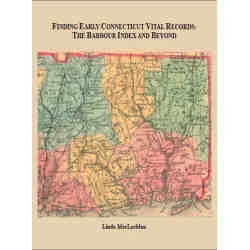
[av_image src=’http://genealogical.com/wp/wp-content/uploads/2018/02/TheResearchersGuidetoAmericanGenealogy-sml-199×300.jpg’ attachment=’3793′ attachment_size=’medium’ align=’left’ styling=” hover=’av-hover-grow’ link=’manually,https://library.genealogical.com/printpurchase/3napy’ target=’_blank’ caption=’yes’ font_size=” appearance=’on-hover’ overlay_opacity=’0.4′ overlay_color=’#000000′ overlay_text_color=’#ffffff’ animation=’left-to-right’ admin_preview_bg=” av_uid=’av-7f6kfd’]
VIEW BOOK DETAILS
[/av_image]
Val D. Greenwood, the author of the new 4th edition, of the acclaimed Researcher’s Guide to American Genealogy, has devoted much of his adult life to advancing the study of genealogy.
Mr. Greenwood is a native Utahan, a child of the Great Depression who started school during WWII. The fifth of six children, he grew up on a family farm a few miles south of Salt Lake City. He was educated at Brigham Young University (BS, 1962) and the University of Idaho (JD, 1974).
While teaching genealogical research at Ricks College (now BYU-Idaho) in Rexburg, Idaho, many years ago, he became frustrated because there was no good text on American genealogical research. The book he wrote to fill that void was entitled The Researcher’s Guide to American Genealogy. It was published in 1973 by Genealogical Publishing Company in Baltimore, Maryland. Through three editions, the book has sold well over 110,000 copies and has been the standard textbook on the subject for many years.
[av_image src=’https://gen.flexpub.com/wp/wp-content/uploads/2018/01/69401.jpg’ attachment=’3567′ attachment_size=’full’ align=’right’ styling=” hover=” link=” target=” caption=” font_size=” appearance=” overlay_opacity=’0.4′ overlay_color=’#000000′ overlay_text_color=’#ffffff’ animation=’no-animation’ admin_preview_bg=” av_uid=’av-6kn13d’][/av_image]
Val Greenwood worked for The Church of Jesus Christ of Latter-day Saint all of his working life. In addition to teaching at Ricks College for six years, he worked for both the Family History Department and the Temple Department, serving in the latter as a director for the last several years prior to his retirement in 1999. He was also a member of the Utah State Bar until his retirement.
Val became an accredited genealogist (AG) in 1965, and assumed the role of an emeritus AG in 2014. He received the Award of Merit from the National Genealogical Society and was also named a fellow of the Utah Genealogical Association. He served as president and a member of the board of the Utah Genealogical Association.
In addition to The Researcher’s Guide, he has also written books of Old Testament stories for adults and has served in positions of leadership and responsibility in his church.
“Genealogy Pointers” recently sat down with Mr. Greenwood to discuss the new edition of The Researcher’s Guide.
That interview follows below:
[av_hr class=’short’ height=’50’ shadow=’no-shadow’ position=’left’ custom_border=’av-border-thin’ custom_width=’50px’ custom_border_color=” custom_margin_top=’30px’ custom_margin_bottom=’30px’ icon_select=’yes’ custom_icon_color=” icon=’ue808′ font=’entypo-fontello’ admin_preview_bg=” av_uid=’av-3oxj89′]
Genealogy Pointers: What inspired you to do a 4th edition of The Researcher’s Guide a full 17 years after edition No. 3?
Val Greenwood: There were several motivations: First, I knew that the third edition was woefully out of date, and I felt bad that it was no longer the same valuable resource that it had once been. Second, in the third edition, I had not updated addresses (as for periodicals, etc.) and some other things that needed to be updated even then. I felt like I still needed to bring all of those things up to date. Third, computer technology and the Internet have truly become major forces in the world of genealogy in those intervening years, and I felt I needed to bring my book into the world of genealogical research that is today’s reality, making the book the valuable resource it needs to be. Fourth, Michael Tepper (managing editor of Genealogical.com) told me that he didn’t think I could do it. I felt like I could and that I needed to prove him wrong-both for myself and for him. Fifth, I could not think of a better use of my time.
GP: What were the biggest challenges you faced in putting together the 4th edition?
VG: My most significant challenge was that of trying to hit a moving target. Many parts of the book had to be rewritten a few times just because things are changing so fast. I found myself going back to make both additions and deletions in the text as I tried to work with and keep up with the metamorphosis that was taking place. Some websites that I cited disappeared while others merged. Even the major family history sites changed some of their features, in the name of enhancement, making strategic changes while I was in the process of writing the book. And I am sure that some things that I finally settled on are already outdated. That is the reality we live with in this age of galloping innovation. It is exciting to see this progress, but it is also frustrating when you are trying to write something that will have meaning for any length of time.
GP: Besides re-writing or updating everything that was in the 3rd edition, you have added two new chapters on genealogy and technology. Since most researchers spend a lot of time online nowadays, do you recommend that they read those chapters first?
VG: I do not recommend this. I believe that there are other important things that the researcher should understand in order to make the best possible use of available technology. Chapters 1 through 8 of The Researcher’s Guide lay a critical foundation for proper use of the technological resources that are available.
I think it is unfortunate that many people who get excited to trace their family history jump right onto the Internet without understanding the basics and thus wind up doing a less than adequate job. They do not understand why or how to keep proper records of their research, they overlook important information, and—because they do not understand the rules of evidence—they rely too heavily on circumstantial evidence of family connections. I do not say this to be critical of these people because they are doing the best they know how, based on their lack of an adequate foundation.
It is unfortunate that so many people are not being taught the important basics. Everything they hear and read suggests that everything is simple and that all of the answers are now on the Internet. Too many are led to believe that all they need to do is get on line and they will be able to find whatever it is they are looking for. Wouldn’t it be wonderful if it were that simple?
GP: What are your biggest concerns about the ways that people pursue their family history today?
VG: I think I explained my main concerns in the answer above. In addition to that, I believe people are not being taught how to keep proper records of their research or even of the need to keep records at all. They are not being taught how to evaluate the evidence they find. Also, they are not being taught what resources are available to help them and how those resources can be used in their research.
GP: You wrote the first edition of The Researcher’s Guide over 40 years ago. Besides technology, why would you encourage owners/users of the earlier editions to obtain a copy of the new one?
VG: Certainly, technology is the main reason, but there is much more than that. And I need to note there are other books, some of them quite extensive, that are devoted solely to technology. The advantage I have is that I integrate technological information into my instruction as it relates to both the specific record types and available research aids that people should be using in their research. The new 4th edition provides information about many new—or relatively new—resources and research aids now available for our use that were non-existent when the earlier editions were written.
GP: Final question. You were trained as an attorney. How does your personal background in the law inform your approach to genealogy?
VG: That is an interesting question. It was actually my interest and involvement in genealogy that was the primary reason I decided to go to law school. There are many records containing invaluable family history/genealogical information whose very existence we owe to legal matters. To name some of the most obvious, there are wills and other probate matters, adoptions, citizenship, property disputes, divorces, etc., etc. When we come to understand something of the legal processes involved in these matters, that is a significant benefit to us as we seek to understand the implications and the meanings of the records that those processes generated. Without introducing too much complexity, I have tried to pass on in my book some of the intricacies of the legal processes involved and how our understanding of these intricacies can make us better genealogists.
I should also note that the study of law teaches a person to look at problems and at information in a different way and thus understand how to better analyze various situations and circumstances. That is good training for whatever one does in life, and it is especially valuable for the genealogist. I have attempted to use this approach to research in The Researcher’s Guide, and many of the explanations and instructions in the book reflect this analytical approach.
[av_button label=’View The Researchers Guide to American Genealogy Details’ link=’manually,https://library.genealogical.com/printpurchase/3napy’ link_target=’_blank’ size=’x-large’ position=’center’ icon_select=’yes’ icon=’ue84f’ font=’entypo-fontello’ color=’theme-color’ custom_bg=’#444444′ custom_font=’#ffffff’ admin_preview_bg=” av_uid=’av-35wb0p’]\




